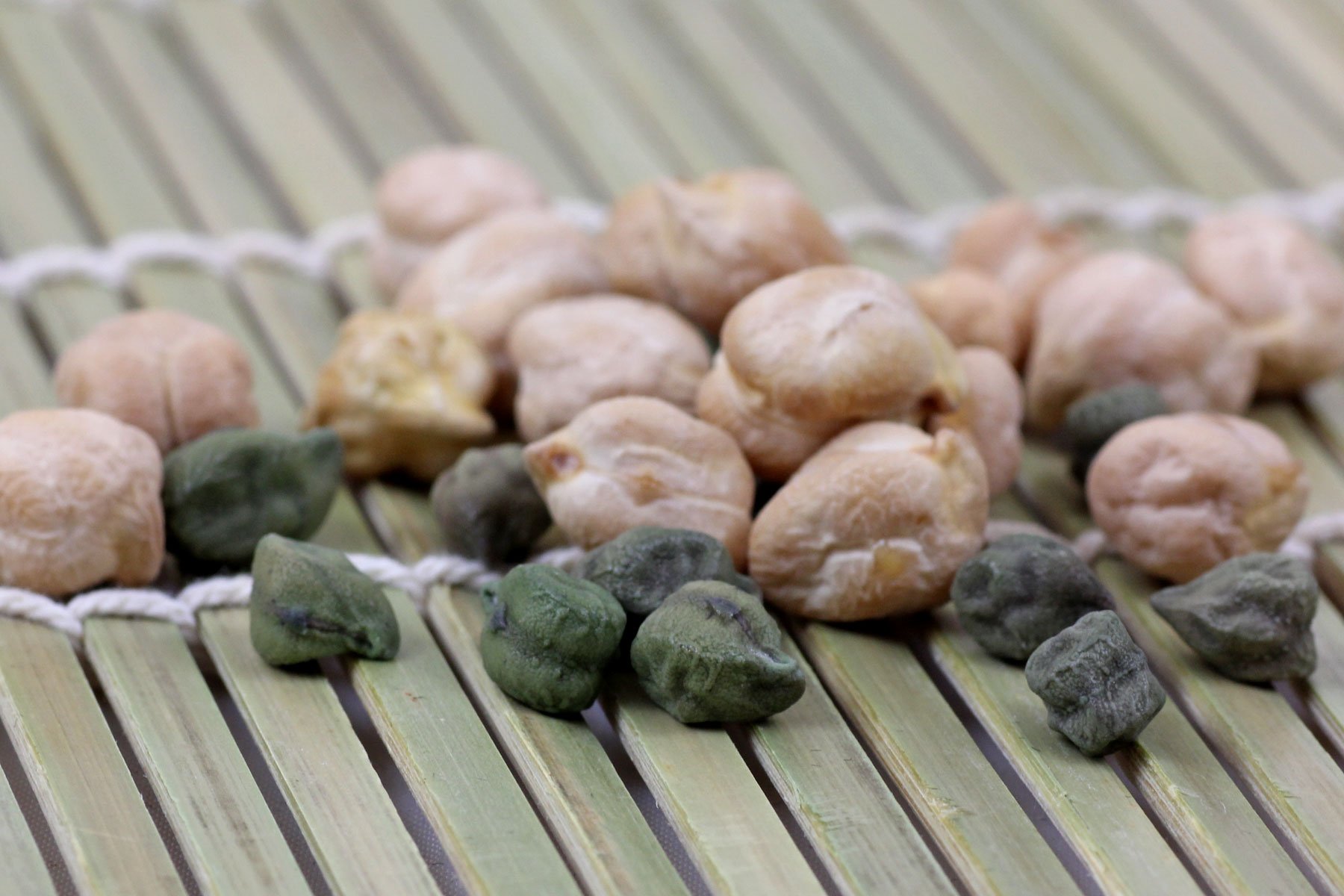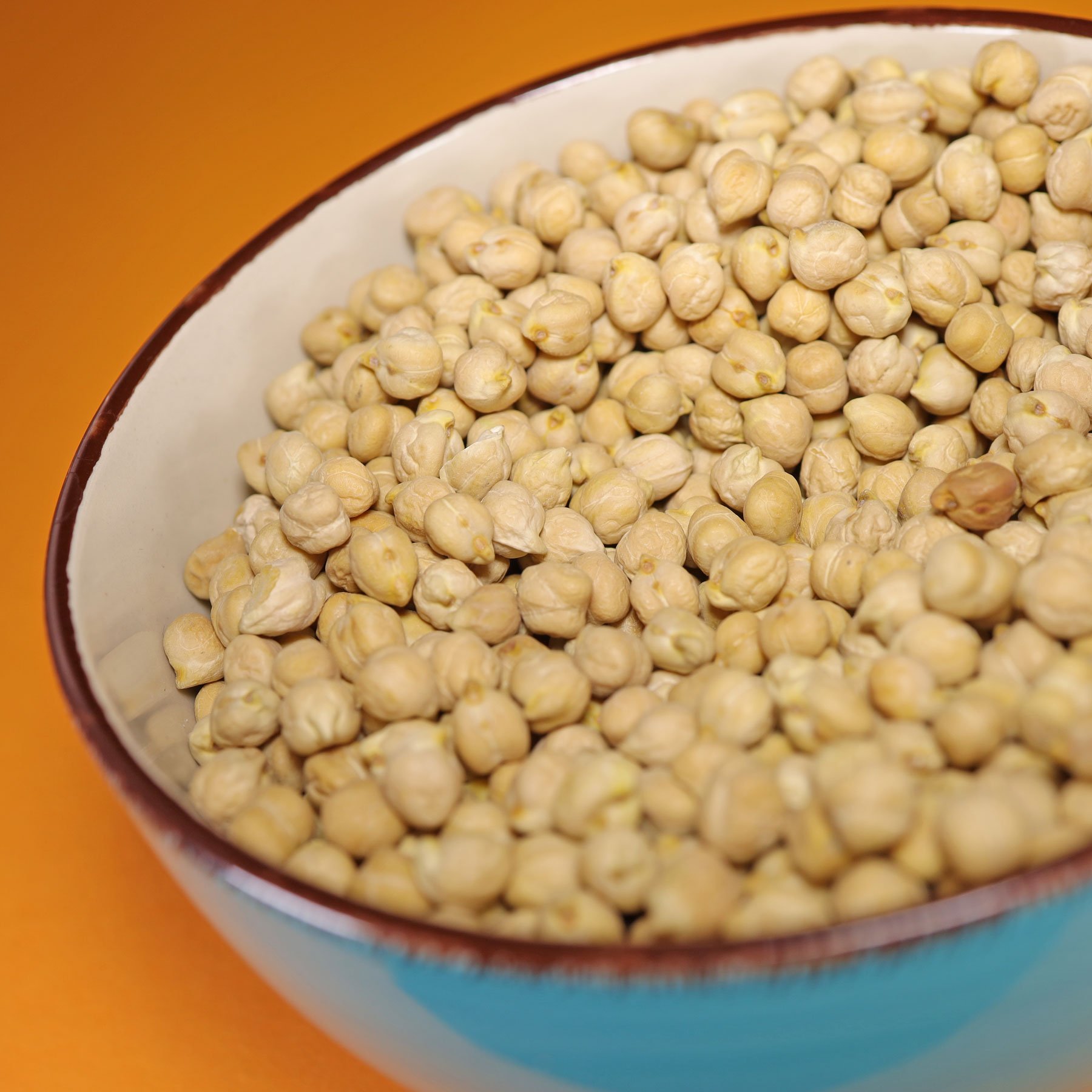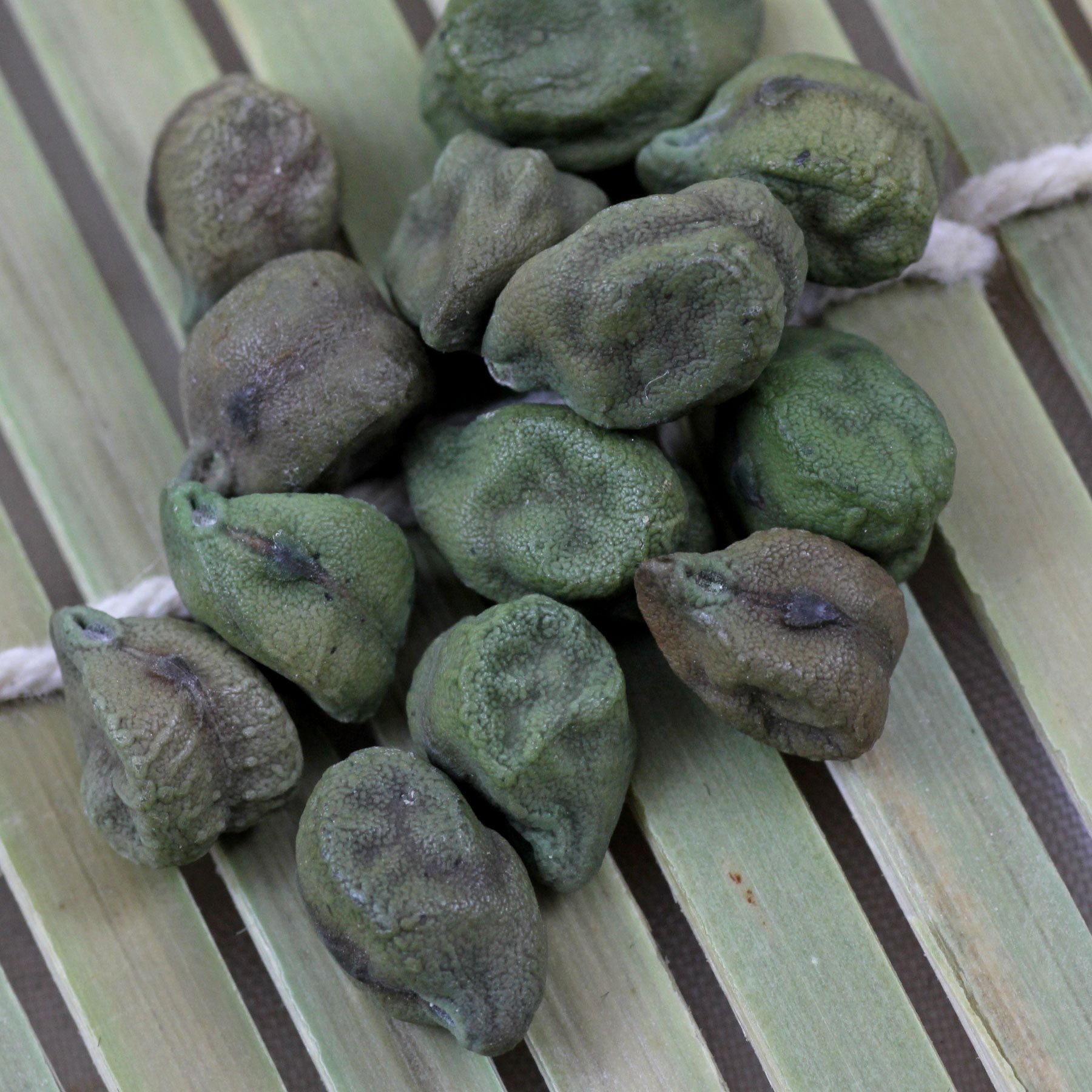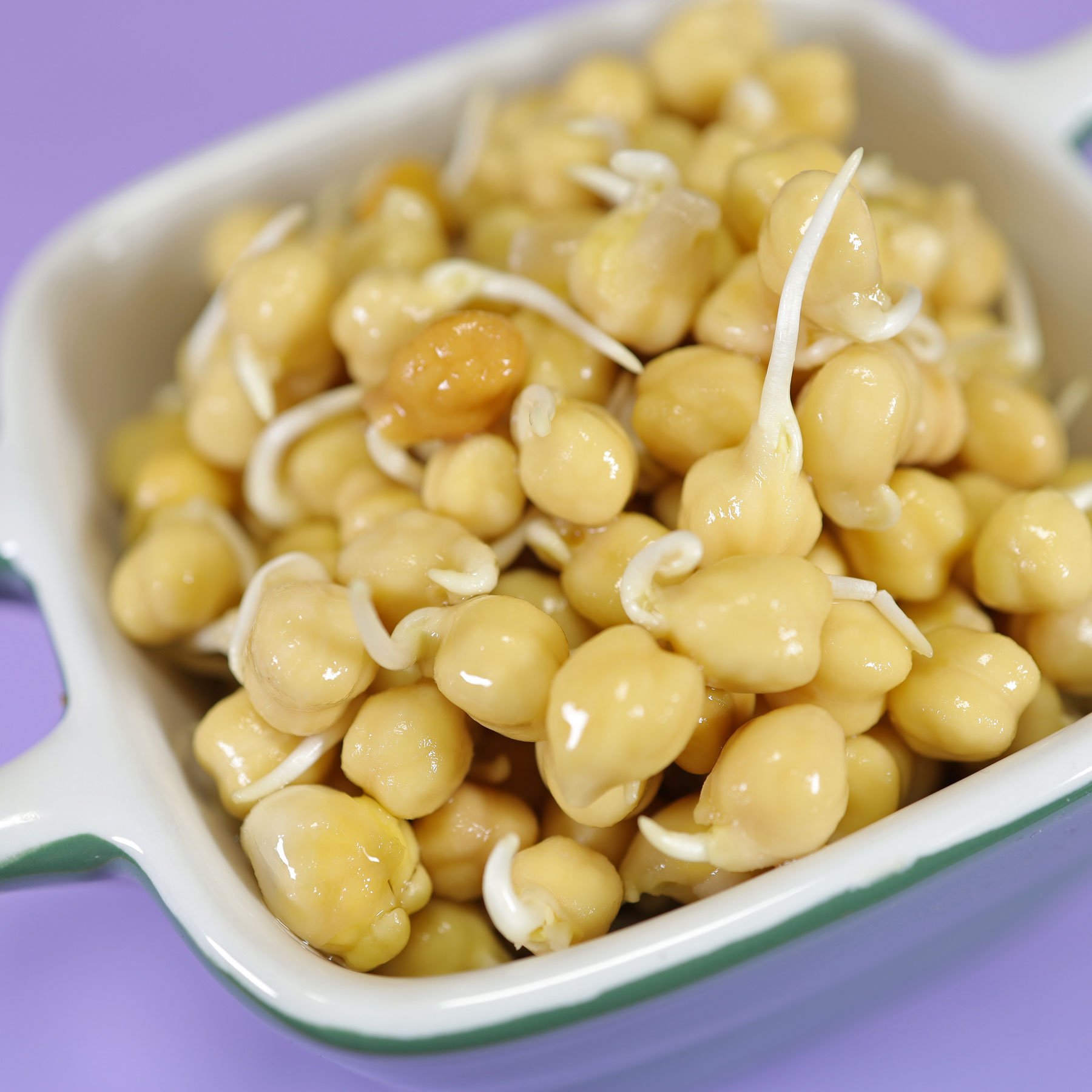The Chickpea (Cicer arietinum) belongs to the legume family. It is a cultivated plant and does not occur naturally. The wild type originates from the Mediterranean region.
Cicer arietinum grows as an annual and can reach between 30 and 100 centimeters in height, depending on the variety and location. Once its seeds are ripe, the plant dies, as is the case with the related beans, peas and lentils.

The beige, yellow, brown, green or black seeds of the chickpea are used for human nutrition. They taste pithy and nutty. Since they contain about 20% protein, they provide long-lasting satiety and are well suited for vegetarian and vegan diets.
Chickpeas are offered dried, roasted, as flour, canned, snack or sprouts.

However, they can also be used to make pancakes, purees and spreads, soups, stews or fritters.

Varieties
The beige to golden yellow, brown, green or black seeds of the Chickpea are between 5 and 15 millimeters in size. Their size depends not only on the variety, but on water, soil and nutrient supply.




Chickpea sprouts
Chickpeas are good for growing sprouts. They germinate quickly, and at temperatures above 68 °F (20 °C) the first root tips appear after only 36 hours.
Info: Chickpea sprouts contain lectins, they should not be eaten raw in large quantities. Blanching makes them more digestible.

How to grow Chickpea sprouts
Soak: for 6 to 8 hours
Watering: 2 times a day, in the morning and in the evening
Harvest: after 36 to 48 hours
Storage: freeze, in the vegetable compartment of the refrigerator they can be kept for 4 to 7 days, but they can continue to grow and then taste bitter
Sprouting equipment: glass sprouter, dome sprouter
Growing instructions
Wash the Chickpeas and soak them for 6 to 8 hours.
I use a glass sprouter to grow them, but dome sprouters or kitchen seed sprouters are also suitable.
Tip: The seeds germinate even if they have been soaked in salt water. Sprouts grown this way taste spicier. However, more than 3 g of salt per liter of water should not be used.

Drain the soaking water and rinse the seeds in the morning and evening.
100 g of chickpeas will make 250 to 300 g of sprouts.
Ingredients
Sprouting should increase the vitamin A and C content. Chickpea sprouts also contain vitamins B1 and B2, as well as iron, phosphorus and manganese.

 “Maculata” plants
“Maculata” plants Bird’s-Foot Trefoil
Bird’s-Foot Trefoil Black Locust: a brief introduction
Black Locust: a brief introduction Fenugreek Sprouts
Fenugreek Sprouts Grass pea
Grass pea How to soak beans
How to soak beans Lentil Sprouts
Lentil Sprouts Red Clover
Red Clover Red Clover
Red Clover What are beans?
What are beans?